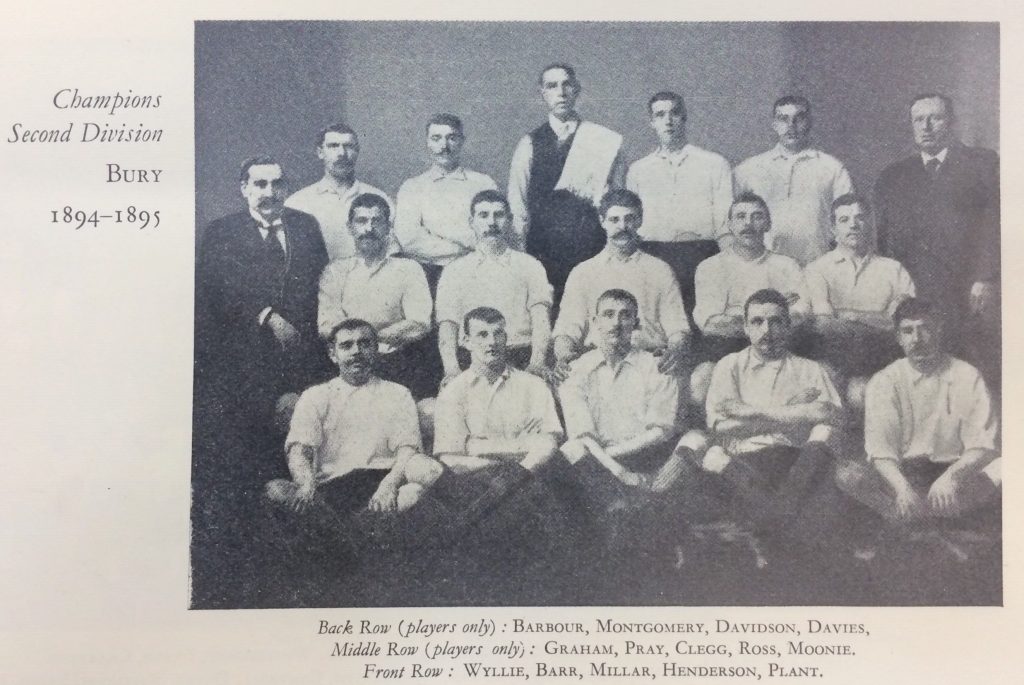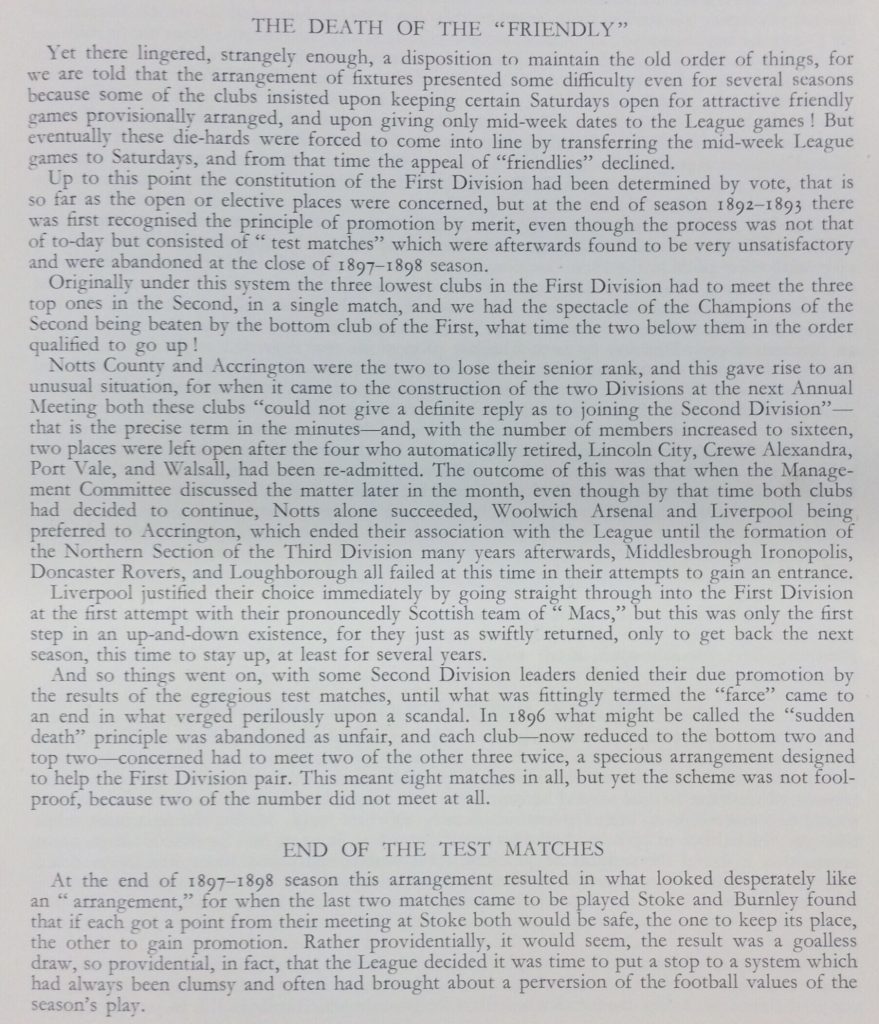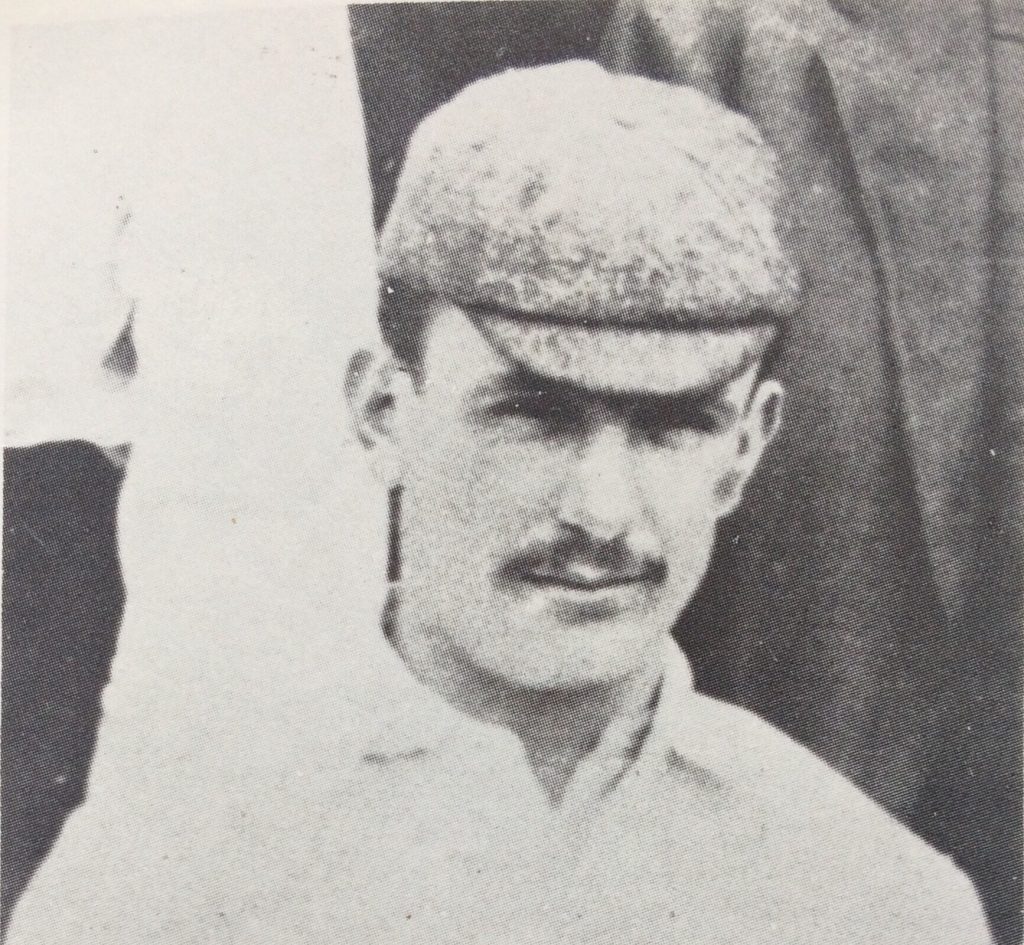‘Test Matches’: The First Football League Play-Offs
With the rapid evolution and expansion of the Football League from its twelve founder members in 1888, came the question of promotion and relegation. ‘Test matches’ were the League’s solution, introduced in April 1893.
The clubs which had formed the rival Football Alliance were absorbed into the League at the start of the 1892-93 season, creating a Second Division. For the first time, deciding how clubs would move between the divisions became an issue and took the form of a series of end-of-season fixtures.
The first test matches pitted the bottom three teams from the First Division (14th to 16th place) in head-to-head one-off games against the top three teams from the Second Division, played on neutral grounds. The winners were politely ‘invited’ to compete in the higher league. While second and third-placed Darwen and Sheffield United earned promotion, 1892-93 Second Division champions Small Heath (later Birmingham City) missed out when losing a replay against the First Division’s basement team Newton Heath (the forerunners of Manchester United). One of the League’s founder members, Accrington lost their play-off to Sheffield United and resigned their membership as they were unable to afford to compete in the Second Division – the club folded completely in 1896.


Above and below: Second Division Champions (Small Heath, Liverpool, Bury & Notts County) who all had to take part in the test matches to win promotion


Roles were reversed the following season, when Newton Heath were relegated after defeat to Second Division Champions Liverpool (in their first League season), and Small Heath won promotion by overcoming Darwen. The ‘Invincibles’ of the League’s first season, Preston North End, found themselves having to win a test match to stay in the First Division only four years after their back-to-back Championship titles.
By 1895, two teams had competed in all three sets of test matches, with Notts County losing out each time. Newton Heath were also unable to regain their top-flight place, and remained in the Second Division where they were to become Manchester United in 1902. Liverpool only spent a season in the top tier before they were ousted by League newcomers Bury, their successors as Second Division Champions.
The original system remained in place until 1895-96, when the test matches were played in a mini-league format. Reduced to four teams, two from each division played each other on a home-and-away basis – the top two in the resulting league table being promoted or remaining in the First Division. To prevent desperate late-season signings, a provision was added that players had to have appeared in at least four league matches, or been resident of the town for a minimum of four weeks to be eligible for the fixtures. Once more Second Division Champions, Liverpool topped the test match table in 1896, with West Brom staying up alongside them. Notts County were finally promoted in 1897, while the 1894-95 League Champions Sunderland kept themselves in the First Division as Newton Heath missed out again.

A radical suggestion was made by Grimsby Town in 1897 to allow the Second Division’s top two to be automatically promoted, with the third-and-fourth place sides meeting the First Division’s bottom two for the remaining places. The proposal was rejected by the League. However the end of the test matches and a move toward the system of automatic promotion and relegation was in sight, after a scandal in the following year’s fixtures.
One of the final test matches, Stoke v Burnley at the Victoria Ground on the 30th April 1898, produced a convenient outcome for both sides. Each club needed only a point, and a goalless draw allowed them to fill the top two positions of the mini-league. The result “aroused more than a few suspicions” of an ‘arrangement’, and scathing press criticism. The Athletic News reported, “The teams could have done without goalkeepers, so anxious were the forwards not to score”. The immediate effect of the scandal was for the Football League to expand the First Division to eighteen clubs, including all four clubs involved in that year’s test matches, before abandoning the “unsatisfactory” method in favour of “promotion by merit”.

A notable figure of early League history, Jimmy Ross played a prominent role for three clubs as he appeared in five consecutive sets of test matches. The Scottish forward nicknamed ‘the little demon’ had been a key figure in Preston’s title-winning teams of the first two League seasons, before helping them remain in the First Division by beating Notts County in 1894. Transferred to Liverpool for the following season, he was on the losing side against Bury before winning promotion in 1896. By 1897, he was part of a Burnley team which lost their top-flight place, then captain as they played out the last fateful test match series of 1898.
For the best part of ninety years clubs continued to be promoted or relegated depending on their league position, before the concept of ‘test matches’ returned. Starting in 1986-87, the introduction of the modern play-offs was one of the most significant changes in the League’s long history (covered in Part Two).
